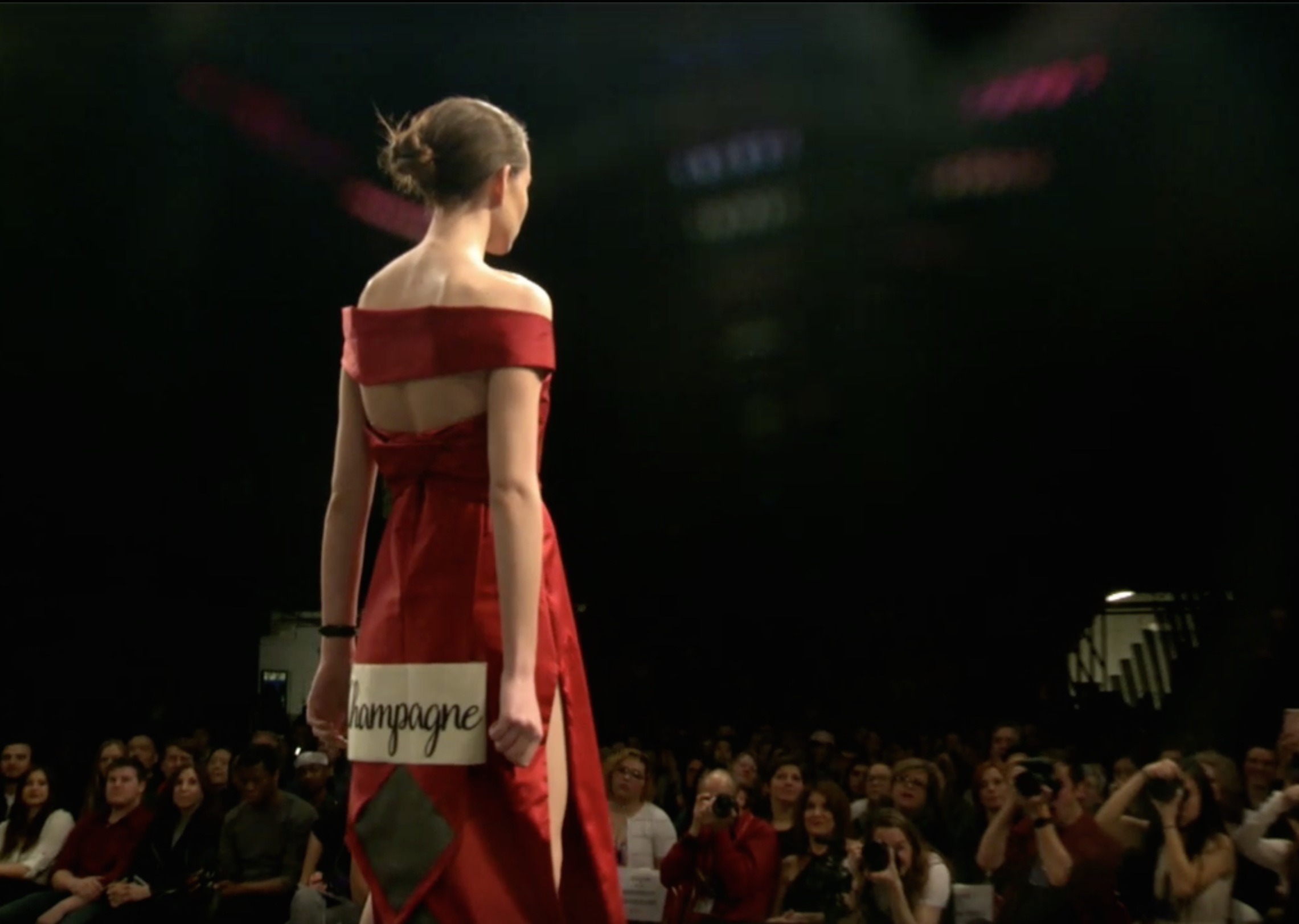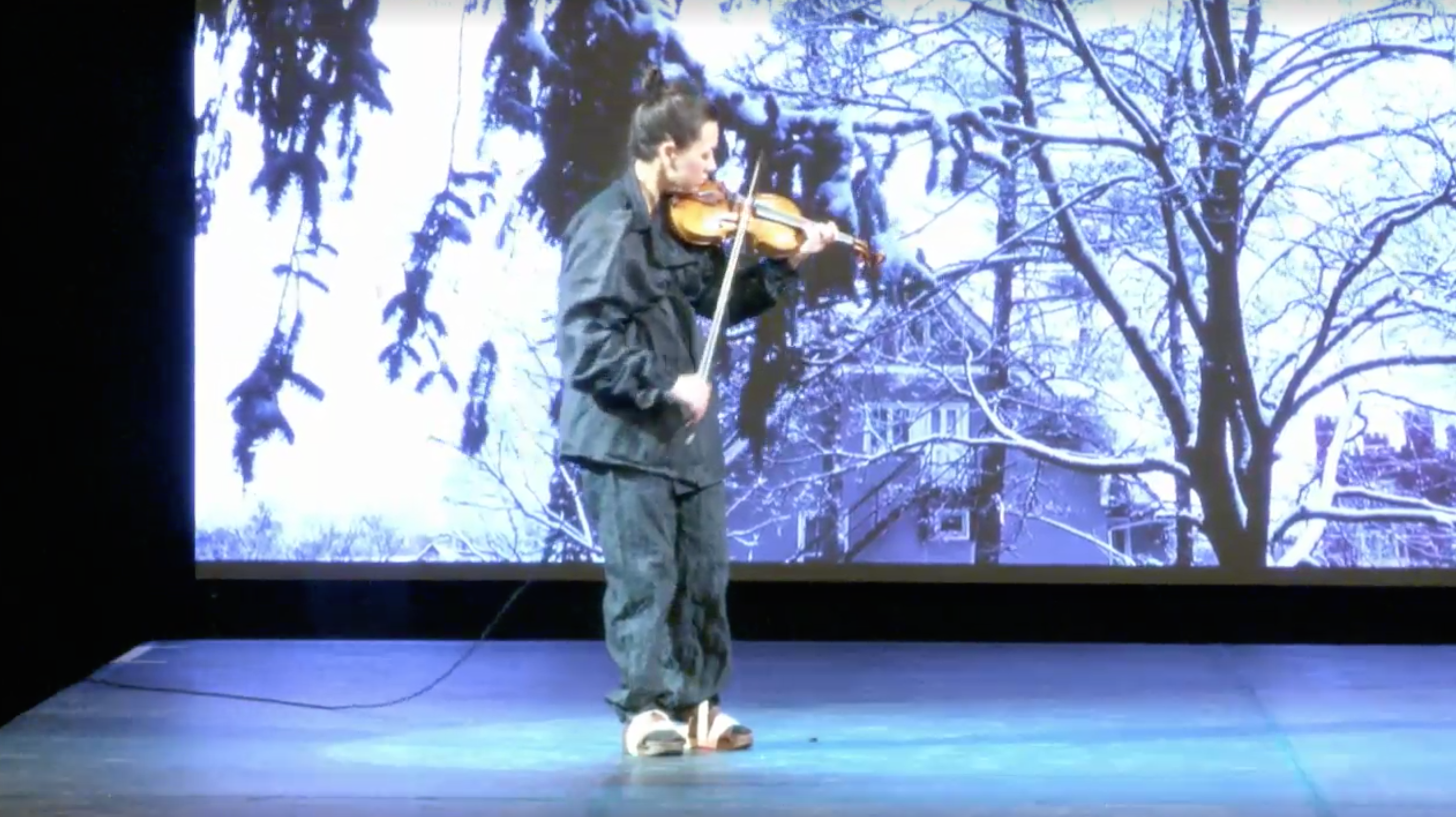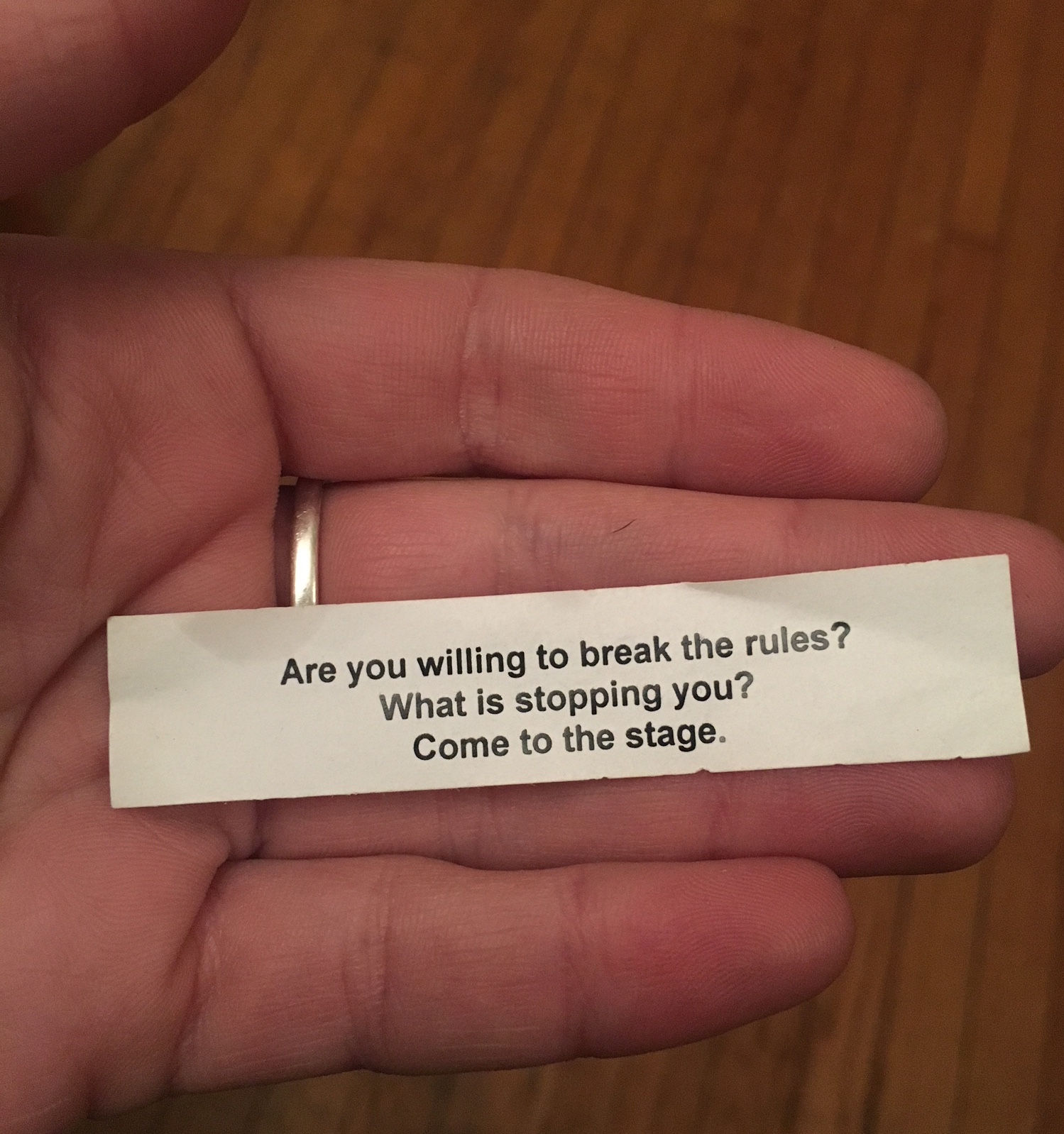Review by Amanda Denham, MA ’17
*The opinions expressed in this blog post are of the author, Amanda Denham, and do not necessarily reflect those of the Cornell Costume and Textile Collection*
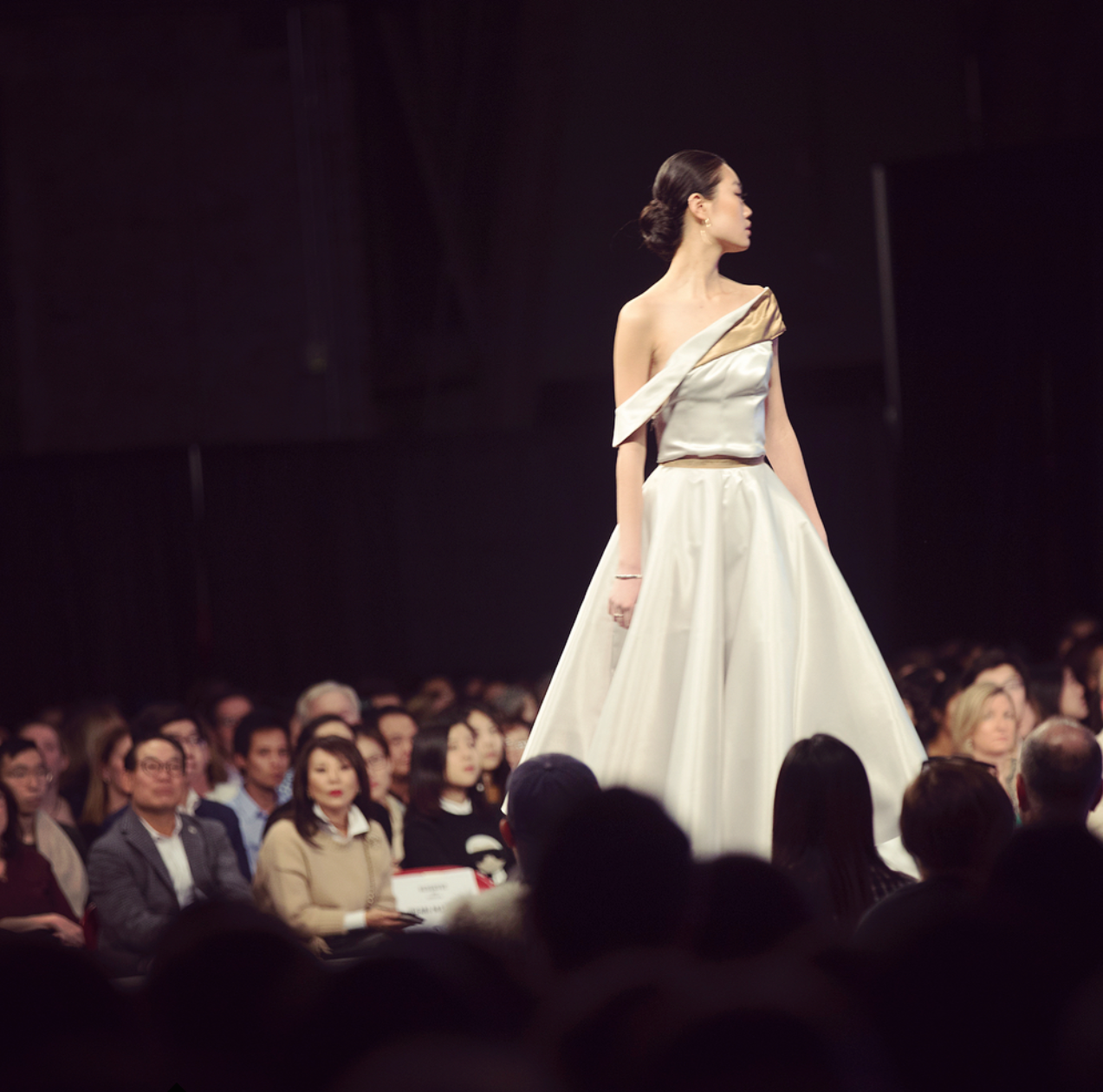
An evening gown designed by Grace Lawson, a junior majoring in fashion design. Photo credit: @cornelluniversity Instagram
It was an evening of high drama. After all, fashion has the potential to disrupt, transform, excite, amuse, betray, beautify, and to destroy. It ran the gamut Saturday evening, and I left the night feeling ambivalent: I was inspired, fulfilled, and proud, but I also left feeling confused and annoyed.
Let me start with some of my favorite moments: One of the truly fantastic and memorable collections that didn’t need a disruptive crutch to inspire conversation was by Grace Lawson, a junior majoring in fashion design. The gowns were breathtaking in their shape and movement. Clearly a skilled seamstress, the silhouettes she created were familiar and beautifully executed. The final gown was a luscious maroon and featured a plunging neckline with a skirt so full it left no room for any of the remaining hot air in Barton hall.

Lily (Xi) Li stands with her models at the end of the runway. Her menswear collection, Pea-Sainté was one of the highlights of the show.
Lily Li’s collection Pea-Sainté was uncanny and sophisticated. It was the only display to feature almost exclusively Asian men. The models strutted the runway in neutral tones wearing what Ms. Li called loungewear. This menswear collection visibly referenced 19th and early 20th century women’s corsetry. Her work was smart, sexy, and masculine. I never thought I wanted to see shirtless men in high-waisted pants with corset-like bodices, but that’s what good fashion does; it shows us things we didn’t even know we wanted to see and invites an audience to think about alternative worlds. And the world I want to live in is definitely full of men whose loungewear is corseted.
The Level One designers were an incredible bright spot in the show, exploring Surrealism in clever ways. Alex Champagne, a first-year fashion design major, brilliantly branded her gown with her last name. Most of the garments in that collection were pretty impressive but Ms. Champagne’s was funny, clever, and really truly surrealist. From the front it may have just been a gown with a pointed hem; however, as soon as the model turned the view from the back revealed it was in fact an enlarged men’s tie (reminding us all of the disproportioned objects in Rene Magritte’s 1952 painting Les valeurs personelles).
The 2018 CFC runway show was memorable for less inspiring reasons as well. One of which, for those of us in attendance, divisively left the audience confused, angry, valorized, and, for me, annoyed. Mark Colbran, a senior fashion design major and fine arts minor, ended his poorly constructed but ethereal display with a banner that concluded with the statement “FUCK THE FSAD FACULTY.” For those of us who have worked closely with FSAD faculty and know how devoted they are, we were confused. It appeared no one except a chorus of fraternity brothers seemed to know to what or whom he was actually referring. After he displayed the banner, CFC President Jessa Chargois calmly entered the stage behind him in what at first seemed a choreographed moment in her floor-length red gown. It wasn’t until the two began playing tug-of-war with the banner that it was clear Mr. Colbran’s aggression was real, and Ms. Chargois had felt personally attacked.
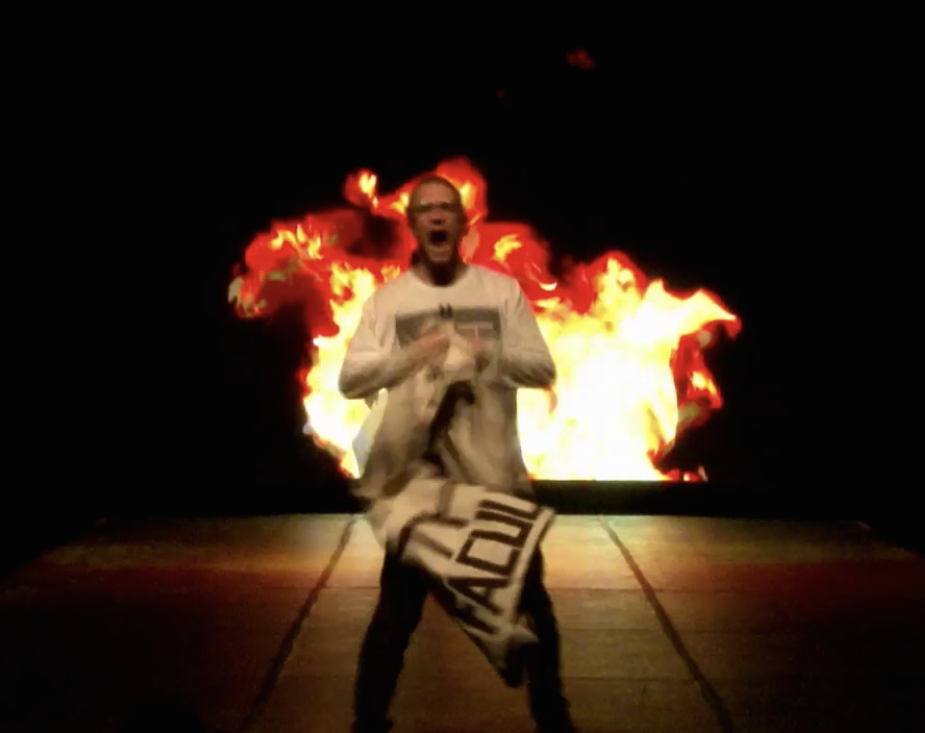
Mr. Colbran’s anger and aggression were palpable as he banged on his chest and displayed his banner. One side of the banner said, “LOVE LOVE LOVE LOVE LOVE LOVE FSAD BOYZ 4 EVER,” while the opposite side said “FUCK HATE BUT FUCK THE FSAD FACULTY.”
I later heard that Mr. Colbran claimed he was exercising his right to freedom of speech when he walked on stage holding the cursory banner. Sure, you do have that freedom (though, some might argue the banner falls under “targeted harassment” of a group of individuals). But, there is a larger, more fundamental misunderstanding of what freedom of speech is supposed to protect. As I write this review, I know that I can freely say what I know about the centuries of violence at the hand of United States without fear of legal repercussions. I could make a statement about how the United States is the bullying leader of global imperialism. We have the freedom to speak critically about the US government without the fear of being persecuted. This is an important freedom, and it was annoying to witness yet another privileged, white, cisgender man in this country take up space for a public display of their entitlement. The garment silhouettes and the performative nature of Mr. Colbran’s collection had potential, and unfortunately the strengths of his collection were eclipsed by the final display of his anger and aggression. The wet-felted textiles, which were actually not produced by Mr. Colbran but by very talented local fiber artists, Karen Stern and Wendy Ives, were absolutely gorgeous. Mr. Colbran’s own textiles felt cliché and clunky. The performative aspect helped the audience to overlook the poor construction value. I wish he would have engaged with the notion of ritual without the predictable (and perhaps offensive) primitivist aesthetic.
Another collection that left me feeling ambivalent was designed by David Wild, a senior studying fashion design. He opened the show, featuring a violin solo from acclaimed violinist, Professor Ariana Kim. As the models walked on the runway, the wooden shoes bound to their feet created an unexpected percussion and rhythm to the fluid violin strings. The details of the garments were difficult to discern but I appreciated the lightweight, monochromatic look occasionally paired with an oversized tote. Models all too quickly exited the runway and entered the audience to pass out fortune cookies. With an eye roll at the cliché (and mind-running with questions of cultural mis-appropriation and trivialization), I opened the cookie to find a note that said “Are you willing to break the rules? What is stopping you? Come to the stage.” Of course I want to break rules! Especially when I’ve been paradoxically told I’m allowed to break them. So go to the stage I did. Suddenly the austere fashion runway was a social space of people churning around as they greeted and hugged and snapped photos. It was powerful. It felt like we were a part of something. On the digital screen behind us, a question (and title of Mr. Wild’s collection) asked the rest of the audience “Who are we?” And, without our consent, Mr. Wild claimed that “We are one.” He obviously missed the point that the people on stage were only those able-bodied folks that received a cookie because they had purchased the most expensive tickets. “Who we are” did not include anyone sitting in the bleachers with a general admission ticket. I discovered later that this act was not part of his collection but was what Mr. Wild called a “protest.” Protesting what exactly? Fashion? I still have no idea what I, as a participant on stage, was supposedly protesting. Mr. Wild created a disruption that could have been meaningful but a protest it was not. Protests have definitively expressed and actionable goals. Protests exist beyond the temporality of what is otherwise the arbitrary congregation of bodies.

Hundreds of students, faculty, and guests were invited by Mr. Wild onto a stage that was designed for a load of 20 people. Unbeknownst to the CFC executive board, Mr. Wild invited people to “break the rules” and come onto the stage via messages in fortunate cookies that were distributed by his models.
The primary similarities between the collections of Mr. Colbran and Mr. Wild (the FSAD BOYZ as they are also known) was their misunderstanding of social implications and the long history of great political activism. I do believe students can and should use CFC as a stage for their creative interpretation and display of important political messages – take last year’s show for example: Rachel Powell’s powerful Roots collection, Samantha Stern’s Der Stern, or the incredible genderqueer work of AJ Saunders. Unfortunately, the FSAD BOYZ lacked foresight beyond their upturned noses to realize that their actions may jeopardize future CFC endeavors. This leaves me to worry that FSAD and CFC will come down even harder on the conceptual work of students in the fear that someone else might, like Mr. Wild, endanger hundreds of people by putting them on a stage only meant to hold twenty bodies. Successful protests and subsequent revolutions demand change while disruptions only inspire stifling, reactionary policy.
All in all, the production value of the event on Saturday evening was some of the best I have seen over the past few years. The success of this and other work was emphatically credited to faculty advisor Professor Jooyoung Shin and Teaching Support Specialist Kimberly Phoenix. These two women, with the support of other FSAD faculty and the CFC executive board, worked tirelessly over the past few months to meet, critique, and sew alongside students late into the night. To take Dr. Shin and Ms. Phoenix’s work for granted is misguided and selfish. They oversaw the entire production to ensure it would be an opportunity students and families could be proud of. The show was professional and thoughtful. CFC is an event we in FSAD look forward to every year and one I hope isn’t censored in the future.
The show reminded us that clothes are not simply personal expressions nor are they merely shelter from the cold Ithaca winters. Garments hang in our closets waiting to be animated by our bodies and to become our bodies. Fashion is exciting because it is about possibilities. Clothing inhabits a space that is simultaneously personal and public. That space between flesh and textile is a nebulous, strange boundary. Like any boundary we must continue to push and to prod without losing sight of the folks sitting in the bleachers.
Amanda Denham received a Master of Arts in Apparel Design from Cornell University and a Bachelor of Arts in Textiles from Kent State University. She currently works as a research assistant in the Cornell Costume & Textile Collection.

